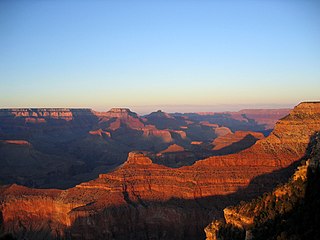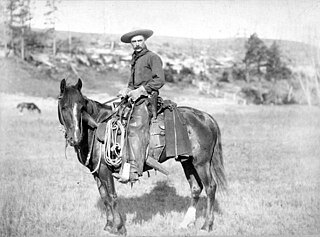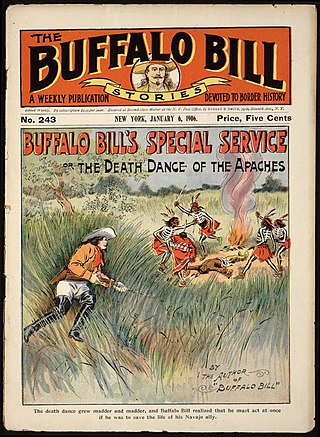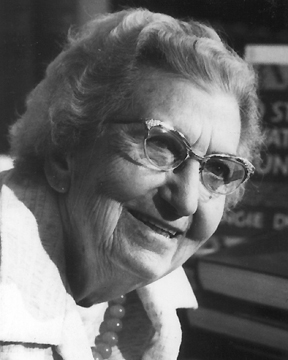
A cowboy is an animal herder who tends cattle on ranches in North America, traditionally on horseback, and often performs a multitude of other ranch-related tasks. The historic American cowboy of the late 19th century arose from the vaquero traditions of northern Mexico and became a figure of special significance and legend. A subtype, called a wrangler, specifically tends the horses used to work cattle. In addition to ranch work, some cowboys work for or participate in rodeos. Cowgirls, first defined as such in the late 19th century, had a less-well documented historical role, but in the modern world work at identical tasks and have obtained considerable respect for their achievements. Cattle handlers in many other parts of the world, particularly South America and Australia, perform work similar to the cowboy.

The Western United States is one of the four census regions defined by the United States Census Bureau.

The American frontier, also known as the Old West, and popularly known as the Wild West, encompasses the geography, history, folklore, and culture associated with the forward wave of American expansion in mainland North America that began with European colonial settlements in the early 17th century and ended with the admission of the last few contiguous western territories as states in 1912. This era of massive migration and settlement was particularly encouraged by President Thomas Jefferson following the Louisiana Purchase, giving rise to the expansionist attitude known as "manifest destiny" and historians' "Frontier Thesis". The legends, historical events and folklore of the American frontier, known as the frontier myth, have embedded themselves into United States culture so much so that the Old West, and the Western genre of media specifically, has become one of the defining features of American national identity.

Willie M. Pickett was an African American cowboy, rodeo performer, and actor. In 1989, Pickett was inducted into the ProRodeo Hall of Fame.
Richard White is an American historian who is the Margaret Byrne Professor of American History Emeritus at Stanford University. Earlier in his career, he taught at the University of Washington, University of Utah, and Michigan State University.

This timeline of the American Old West is a chronologically ordered list of events significant to the development of the American West as a region of the continental United States. The term "American Old West" refers to a vast geographical area and lengthy time period of imprecise boundaries, and historians' definitions vary. The events in this timeline occurred primarily in the portion of the modern continental United States west of the Mississippi River, and mostly in the period between the Louisiana Purchase in 1803 and the admission of the last western territories as states in 1912 where most of the frontier was already settled and became urbanized; a few typical frontier episodes happened after that, such as the admission of Alaska into the Union in 1959. A brief section summarizing early exploration and settlement prior to 1803 is included to provide a foundation for later developments. Rarely, events significant to the history of the West but which occurred within the modern boundaries of Canada and Mexico are included as well.

The frontier myth or myth of the West is one of the influential myths in American culture. The frontier is the concept of a place that exists at the edge of a civilization, particularly during a period of expansion. The American frontier occurred throughout the 17th to 20th centuries as European Americans colonized and expanded across North America. This period of time became romanticized and idealized in literature and art to form a myth. Richard Slotkin, a prominent scholar on the subject, defines the myth of the frontier as "America as a wide-open land of unlimited opportunity for the strong, ambitious, self-reliant individual to thrust his way to the top."

Al Sieber was a German-American immigrant who fought in the American Civil War (1861-1865), and in the American Old West frontier against the Native Americans. (Indians) in the later American Indian Wars of the mid to late 19th century. He became a prospector and later served as a decorated Chief of Scouts for the United States Army during the subsequent Apache Wars of 1849 - 1886 in the southwestern United States.
Mo-nah-se-tah or Mo-nah-see-tah, aka Me-o-tzi, was the daughter of the Cheyenne chief Little Rock. Her father was killed on November 28, 1868, in the Battle of Washita River when the camp of Chief Black Kettle, of which Little Rock was a member, was attacked by the 7th U.S. Cavalry under the command of Lieutenant Colonel George Armstrong Custer. Mo-nah-se-tah was among the 53 Cheyenne women and children taken captive by the 7th Cavalry after the battle.
"Git Along, Little Dogies" is a traditional cowboy ballad, also performed under the title "Whoopie Ti Yi Yo." It is cataloged as Roud Folk Song Index No. 827. Members of the Western Writers of America chose it as one of the Top 100 Western songs of all time.
William Grant Bagley was a historian specializing in the history of the Western United States and the American Old West. Bagley wrote about the fur trade, overland emigration, American Indians, military history, frontier violence, railroads, mining, and Utah and the Mormons.
The "new western history" movement emerged among professional historians in the 1980s, a belated manifestation of the 1970s "new social history" movement. The new western historians recast the study of American frontier history by focusing on race, class, gender, and environment in the trans-Mississippi West. The movement is best known through the work of Patricia Nelson Limerick, Richard White, William Cronon, and Donald Worster. The philosophy and historiography of the new western historians is discussed thoroughly and supportively in Patricia Nelson Limerick, Clyde Milner II, and Charles E. Rankin, eds., Trails: Toward A New Western History. An overview of the New Western History is available in Clyde Milner, et al., The Oxford History of the American West.
William M. McGinty was an Oklahoman cowboy.

Angie Elbertha Debo, was an American historian who wrote 13 books and hundreds of articles about Native American and Oklahoma history. After a long career marked by difficulties, she was acclaimed as Oklahoma's "greatest historian" and acknowledged as "an authority on Native American history, a visionary, and an historical heroine in her own right."

Richard Aitson was a Kiowa-Kiowa Apache bead artist, curator, and poet from Oklahoma.

The following works deal with the cultural, political, economic, military, biographical and geologic history of pre-territorial Montana, Montana Territory and the State of Montana.

The following works deal with the cultural, political, economic, military, biographical and geologic history of pre-territorial Wyoming, Wyoming Territory and the State of Wyoming.

The following published works deal with the cultural, political, economic, military, biographical and geologic history of pre-territorial Oregon, Oregon Territory and the State of Oregon.
This is an English language bibliography of scholarly books and articles on the American frontier. It is a selection from tens of thousands of titles. See also: Bibliography of the Western United States
Bibliography of the Western United States is a small selection of the most useful books and articles on the Western United States.
 1993 edition
1993 edition











